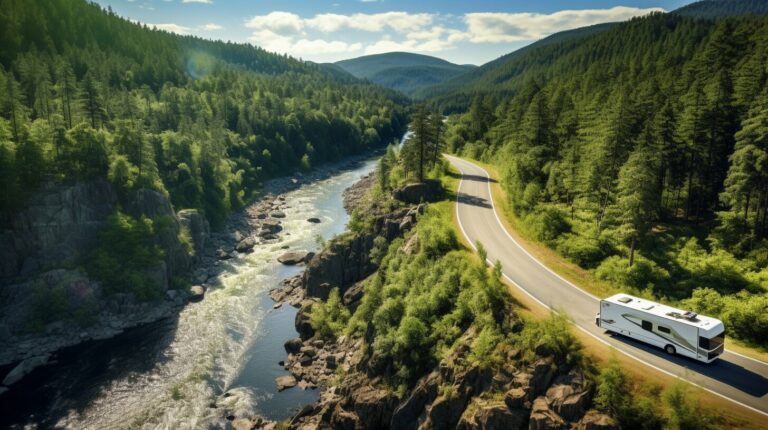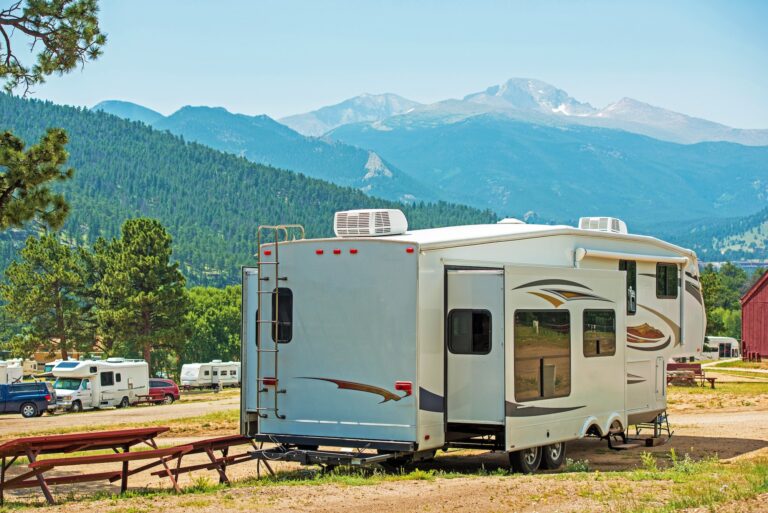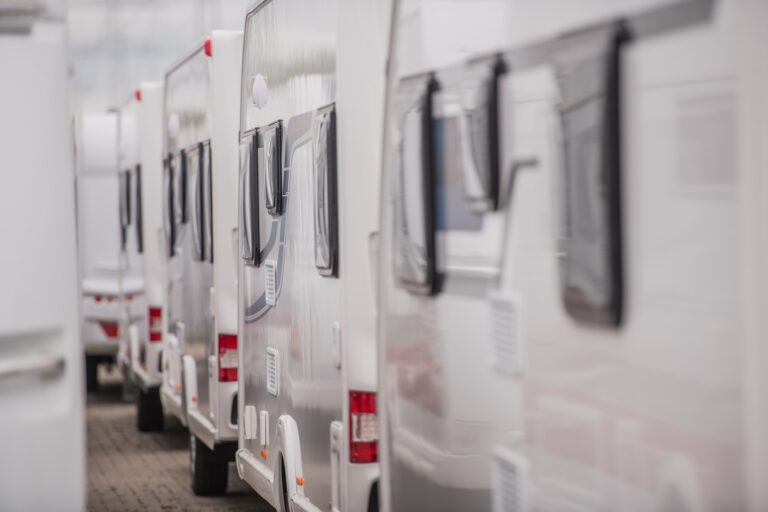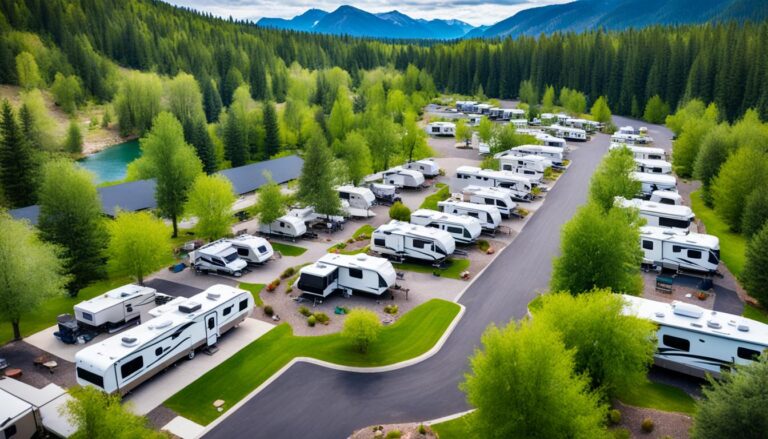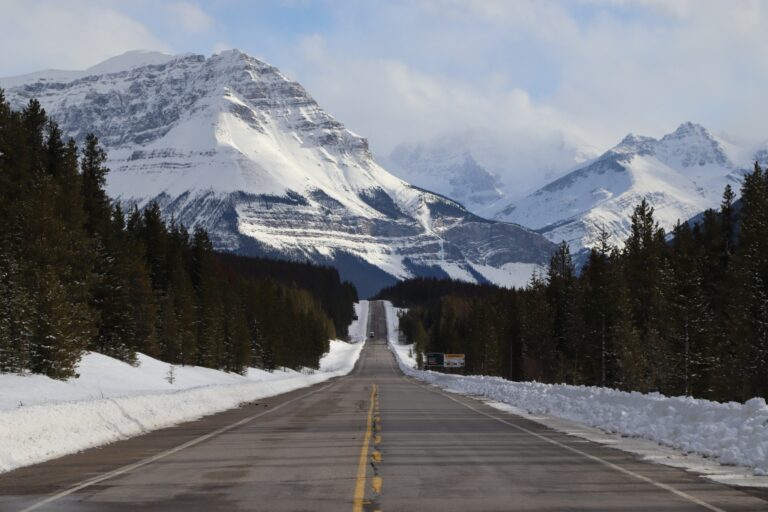As an RV owner, it’s crucial to keep up with the maintenance of your vehicle to ensure it operates smoothly and efficiently. Proper RV maintenance can also prevent costly repairs down the line and extend the lifespan of your RV. In this guide, we’ll walk you through some essential RV maintenance tips to help you keep your vehicle in top shape.
First and foremost, create a regular RV maintenance checklist and schedule to keep track of what needs to be done and when. Regular inspections and maintenance can help prevent breakdowns and other issues on the road.
Create a Maintenance Checklist
Creating a maintenance checklist is one of the best things you can do to keep your RV in top condition. It doesn’t have to be complicated, just a list of tasks you need to complete at regular intervals. This way, you can keep track of what needs to be done and when, ensuring that your RV is maintained properly.
Why use a maintenance checklist?
A maintenance checklist is an essential tool for any RV owner. It helps you stay on top of regular maintenance tasks, such as changing the oil, checking the brakes, and inspecting the tires. It’s easy to forget when these tasks are due, especially if your RV is not used frequently. A checklist ensures that nothing is overlooked or forgotten.
There are many benefits to using a maintenance checklist, including:
- Keeping your RV in top condition
- Preventing breakdowns and costly repairs
- Increasing safety on the road
- Extending the lifespan of your RV
How to create a maintenance checklist
To create a maintenance checklist, start by reviewing your RV’s owner manual. It should have a list of recommended maintenance tasks and intervals. Use this as a starting point, and add any additional tasks that are specific to your RV or your personal preferences.
Your checklist should include the following:
| Task | Interval |
|---|---|
| Change the oil | Every 3,000 to 5,000 miles |
| Check the brakes | Every 6 months |
| Inspect the tires | Before each trip |
| Check the battery | Every month |
| Inspect the roof | Every 6 months |
| Clean the interior | After each trip |
| Clean the exterior | Every 3 months |
Remember to include any tasks that are specific to your RV, such as cleaning the water system or testing the generator. Once your checklist is complete, keep it in a visible location and mark off each task as you complete it.
A maintenance checklist is an essential tool for any RV owner. By keeping your RV properly maintained, you can extend its lifespan, prevent breakdowns, and enjoy smooth travels for years to come.
Inspect Your RV Regularly
To keep your RV running smoothly, regular inspections are essential. Regular inspections can detect any problems before they become serious and expensive to fix.
Exterior Inspection
Regularly inspecting the exterior of your RV can help you identify any potential issues and prevent further damage. Inspect the exterior of your RV for any cracks, leaks, or other damage. Check the seals around windows, doors, and joints to ensure they are intact and not pulling away.
Additionally, check the exterior lights to ensure they are working properly. Check the condition of your tires, including the tread depth and tire pressure, to ensure they are safe for travel.
Interior Inspection
Regularly inspecting the interior of your RV can help prevent problems and ensure your RV is in good condition. Check the condition of your furniture, floors, and walls for any damage or wear and tear.
Inspect your RV’s electrical system and ensure all outlets and switches are functioning correctly. Check your RV’s plumbing and ensure there are no leaks or other issues. Inspect the propane system to ensure there are no leaks or damage to the appliances.
Slide-Out Maintenance
If your RV has slide-outs, it is essential to maintain them regularly. Regularly lubricate the slide-out mechanisms with a dry silicone-based lubricant to ensure smooth operation. Check the slide-out seals and ensure they are in good condition and not pulling away from the RV.
Regular inspections can help prolong the life of your RV and prevent costly repairs down the line. Make sure to schedule regular inspections and address any issues as soon as possible to keep your RV in top condition.
Clean Your RV Inside and Out
Keeping your RV clean is not just for aesthetic purposes, it is also essential for its maintenance. Dirt and grime can accumulate and cause damage to the exterior and interior of your RV. Here are some tips for cleaning your RV inside and out:
Cleaning the Exterior
When cleaning the exterior of your RV, it is important to use the right cleaning materials and techniques to avoid damaging the surface. Follow these steps to clean your RV exterior:
| Materials: | RV-specific wash and wax, soft-bristled brush, microfiber towels, water hose |
|---|---|
| Steps: |
|
Cleaning the Interior
The interior of your RV can accumulate dust, dirt, and unpleasant odors over time. Here’s how to keep it clean:
| Materials: | All-purpose cleaner, microfiber towels, vacuum cleaner, broom and dustpan, air freshener |
|---|---|
| Steps: |
|
With these tips, you can keep your RV looking clean and well-maintained, ensuring that you can enjoy your travels without any unexpected issues.
Maintain Your RV’s Engine and Battery
Keeping your RV’s engine and battery in good condition is crucial for a successful road trip. Here are some tips for maintaining them:
| Task | Frequency |
|---|---|
| Check engine oil level and quality | Once a month or before every trip |
| Check and top off other fluids (coolant, brake fluid, transmission fluid, power steering fluid) | Once a month or before every trip |
| Check air filter | Once a month or before every trip |
| Check and clean battery terminals | Once a month or before every trip |
| Check battery water level, if applicable | Once a month or before every trip |
| Charge battery if needed | As needed, especially during long periods of storage |
It’s important to follow your RV’s maintenance schedule and to address any issues promptly. If you’re not comfortable performing maintenance tasks on your own, consider taking your RV to a professional for service.
Check and Maintain Your RV’s Water System
One of the most important components of your RV is the water system. Not only does it provide you with clean, fresh water, but it also helps to keep your RV clean. Here are some tips for maintaining your RV’s water system:
| Task | Frequency |
|---|---|
| Flush the water system | At least once every six months |
| Replace water filters | As recommended by the manufacturer |
| Check for leaks | Regularly |
Flushing the water system is essential for removing any contaminants that may have accumulated in the tanks and pipes. To do this, you can use a solution of water and bleach or a specialized RV water system cleaner. Be sure to flush the system thoroughly with clean water afterwards.
Replacing the water filters is also important for ensuring that your water is clean and safe to drink. Check with the manufacturer to determine when the filters should be replaced and follow their recommendations.
Regularly checking for leaks can help to prevent water damage to your RV. Look for signs of water damage, such as stains on the ceiling or walls, and inspect the pipes and fittings for any signs of wear or damage.
Winterizing Your RV’s Water System
If you live in an area where the temperature drops below freezing during the winter months, it’s important to winterize your RV’s water system to prevent damage from frozen pipes. This involves draining the water from the tanks and pipes, and adding antifreeze to the system.
- First, turn off the water heater and open all of the faucets to drain the water from the system.
- Next, add antifreeze to the system. You can use a kit specifically designed for this purpose, or have a professional do it for you.
- Be sure to follow the manufacturer’s instructions for adding the antifreeze and protecting your water pump.
By following these tips for maintaining your RV’s water system, you can help to ensure that you have clean, fresh water whenever you need it, and avoid costly repairs due to water damage or frozen pipes.
Inspect and Replace Your RV’s Tires
One of the most important parts of RV maintenance is checking and maintaining your tires. Your tires are the only point of contact between your RV and the road, meaning they need to be in optimal condition for safe travels.
Start by checking your tire pressure regularly. Make sure your tires are at the correct pressure and that they’re not under-inflated or over-inflated. This can cause uneven wear and tear on your tires, reducing their lifespan. If you’re unsure about the correct tire pressure for your RV, check your owner’s manual or consult a professional.
It’s also important to inspect your tires for any signs of damage or wear. Look for cracks, bulges, or punctures on the tread and sidewall. If you notice any damage, it’s best to get your tires checked by a professional. Replacing your tires when necessary is crucial for safe and smooth travels.
If you’re planning to store your RV for an extended period, make sure to take special care of your tires. Inflate them to the recommended pressure and keep them covered to protect them from the elements.
When to Replace Your Tires
It’s recommended to replace your RV tires every 5-7 years, even if they appear to be in good condition. This is because the rubber can deteriorate over time, leading to a higher risk of blowouts or other tire-related issues. If you’re unsure about the age or condition of your tires, consult a professional for an inspection and replacement if necessary.
| Signs that it’s time to replace your tires: |
|---|
| Excessive wear and tear |
| Cracks in the sidewall |
| Bulges in the sidewall |
| Punctures or cuts in the tread |
Protect Your RV From the Elements
Mother Nature can be quite unpredictable, and harsh weather conditions can cause significant damage to your RV. That’s why it’s crucial to protect it from the elements as much as possible. Here are some ways to keep your RV safe:
| Method | Description |
|---|---|
| Invest in an RV cover | An RV cover is an excellent investment to protect your RV from rain, hail, and snow. Choose a cover that fits your RV’s dimensions. |
| Choose a covered storage facility | If you don’t have space on your property to store your RV, consider renting a covered storage facility. It will keep your RV safe from the sun, wind, and rain. |
| Keep the roof clean | Regularly cleaning your RV’s roof will prevent debris from accumulating and causing damage. Use a mild cleaner and a soft-bristled brush to clean the roof. |
By taking these steps, you can significantly extend the life of your RV and protect it from costly repairs.
Maintain Your RV’s Engine and Battery
Regular maintenance of your RV’s engine and battery is essential to ensure that your vehicle operates efficiently and reliably. Follow these tips to keep your RV humming:
| Task | Frequency |
|---|---|
| Check oil level and quality | Every 3,000 miles or per manufacturer’s recommendations |
| Change oil and oil filter | Every 5,000 miles or per manufacturer’s recommendations |
| Replace air filter | Every 20,000 miles or per manufacturer’s recommendations |
| Check and fill coolant level | Every month or per manufacturer’s recommendations |
| Inspect battery and cables for corrosion | Every month |
| Test battery and replace as needed | Every year |
Additionally, be sure to keep your engine and battery clean and free of debris and dirt. This not only helps with performance but can also prevent damage and extend the life of your vehicle.
Pro Tip: Make sure to properly dispose of old oil and other engine fluids. Many auto parts stores and service centers offer recycling services for these materials.
FAQ – Frequently Asked Questions about RV Maintenance
RV maintenance can seem daunting, but it doesn’t have to be. Here are some common questions and answers to help keep your RV in top condition.
Q: How often should I have my RV serviced?
A: Regular maintenance is essential for smooth travels. It’s recommended to have your RV serviced annually or every 12,000 miles, whichever comes first. Consult your RV’s owner manual for specific recommendations.
Q: Can I perform RV maintenance myself?
A: Yes, there are many DIY RV maintenance tasks that you can safely perform at home. It’s important to be familiar with your RV’s systems and to have the necessary tools for the job. However, some tasks, such as electrical or plumbing repairs, may require a professional.
Q: How much does RV maintenance cost?
A: The cost of RV maintenance varies depending on the type of service required. Regular maintenance tasks such as oil changes, tire rotations, and brake pads replacements can cost between $300-$500. Major repairs can cost significantly more. It’s important to budget for these expenses and to have a plan in place for unexpected repairs.
Q: Can I store my RV outside?
A: While you can store your RV outside, it’s important to protect it from the elements. UV rays, rain, and snow can cause damage to your RV’s exterior and interior. Consider using a cover or renting a covered storage space to keep your RV in top condition.
Q: How do I maintain my RV’s battery?
A: It’s important to keep your RV’s battery charged and maintained, especially during periods of storage. Disconnect the negative battery cable to prevent drain and consider using a trickle charger to keep your battery at optimal levels. Consult your RV’s owner manual for specific recommendations.
Q: What should I look for when inspecting my RV’s water system?
A: Check for leaks, cracks, or damage to your RV’s water lines, faucets, and tanks. Make sure all connections are tight and secure. It’s recommended to flush and sanitize your RV’s water system at least once a year to prevent bacterial growth.
Q: How often should I replace my RV’s tires?
A: Tires should be replaced every six years, regardless of the amount of wear or mileage. It’s important to regularly check tire pressure and to inspect for cracks or damage on the sidewalls. Consider upgrading to high-quality, durable tires to ensure safe travels.
By following these tips and keeping up with regular maintenance, you can enjoy many worry-free miles in your RV. Happy travels!


